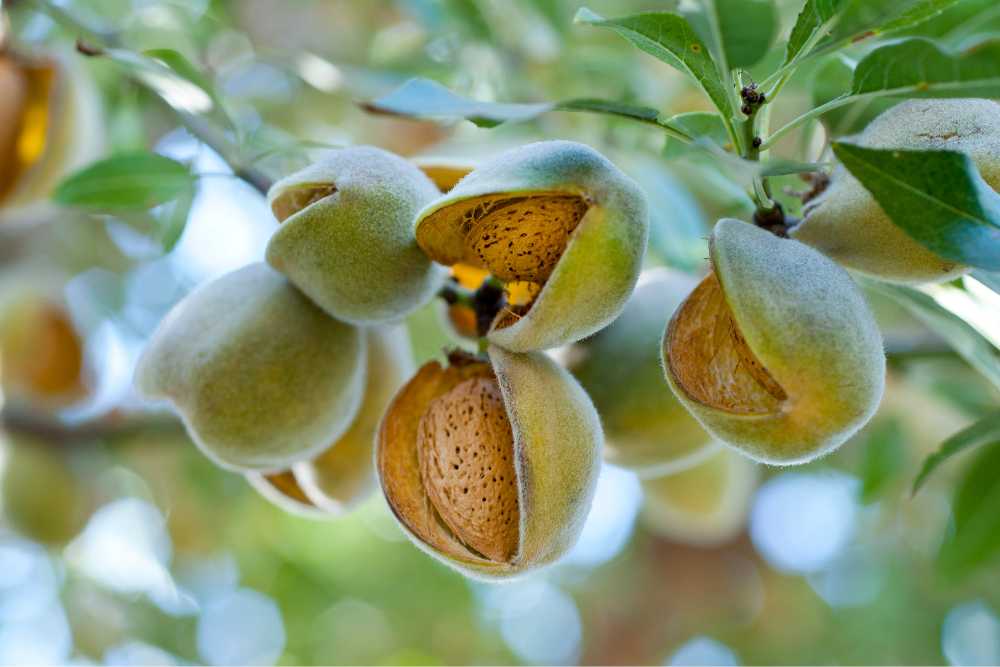Almonds are one of the most popular and versatile nuts in the world. They are celebrated for their rich flavor, nutritional value, and adaptability in culinary applications. Originating from the Middle East and South Asia, almonds have become a staple in markets worldwide, thanks to their unique qualities and growing health awareness.
The Nutritional Powerhouse
Almonds are known for their impressive nutritional profile. A single ounce (about 28 grams) contains approximately:
- Calories: 160
- Protein: 6 grams
- Healthy fats: 14 grams
- Fiber: 3.5 grams
- Vitamin E: 7.3 mg (37% of the Recommended Daily Intake)
- Magnesium: 76 mg (19% of the RDI)
These nuts are also rich in antioxidants, particularly in their skin, making them a great choice for promoting heart health and managing blood sugar levels.
Key Types of Almonds in the Market
The global almond market offers a variety of almond types, each with unique characteristics and uses. Here are some of the most prominent ones:
- Nonpareil Almonds
- Origin: Primarily cultivated in California, USA.
- Features: Smooth, light-colored skin and a large, flat kernel.
- Uses: Ideal for snacks, slicing, and blanching due to their easy-to-remove skin.
- Carmel Almonds
- Origin: California, USA.
- Features: Similar to Nonpareil but with a slightly darker, wrinkled skin.
- Uses: Often used in confectionery and baking.
- Monterey Almonds
- Origin: California, USA.
- Features: Medium-sized kernel with a rich, buttery flavor.
- Uses: Suitable for roasted snacks and almond milk production.
- Mamra Almonds
- Origin: Predominantly grown in Iran and Afghanistan.
- Features: Naturally organic, with a higher oil content and a rich, sweet taste.
- Uses: Preferred in health-conscious markets for raw consumption and premium desserts.
Iranian Almonds: A Closer Look
Iran is renowned for its high-quality almond varieties, each offering unique flavors and applications. Among these, Mamra almonds stand out for their exceptional quality and natural cultivation methods. Let’s explore the Iranian almond landscape:
- Mamra Almonds: As mentioned, these are celebrated for their organic nature, high oil content, and sweetness. They are primarily cultivated in the Fars, Kerman, and Khorasan regions. Iranian Mamra almonds are often favored for raw consumption and in premium products, thanks to their natural sweetness and nutrient-rich profile.
- Paper Shell Almonds: These almonds have a thin shell that is easy to crack, making them a convenient option for consumers. Their delicate flavor makes them ideal for snacking and baking.
- Stone Almonds: Known for their hard shells, these almonds are less common but are still valued for their rich flavor. They are often used in traditional Iranian recipes.
- Rabi Almonds: This variety is smaller and more elongated, with a robust taste. Rabi almonds are popular in local markets and are often used in confectionery.
Iranian almonds benefit from the country’s unique climate, which combines arid conditions with nutrient-rich soil, enhancing the flavor and quality of the nuts. The traditional cultivation methods further add to their appeal, making them a sought-after commodity in both local and international markets.

Almond Products and Their Demand
Almonds are incredibly versatile and find their way into various forms in the market:
- Flaked Almonds: Thinly sliced almonds used as toppings for desserts, salads, and baked goods.
- Slivered Almonds: Almonds cut into thin, stick-like pieces, often used in savory dishes and baked recipes.
- Chopped Almonds: Coarsely cut almonds ideal for adding texture to granola bars, cookies, and casseroles.
- Almond Paste: A sweetened almond mixture used in making marzipan, pastries, and confections.
- Whole Almonds: Typically consumed raw, roasted, or flavored as a healthy snack.
- Almond Meal: A coarser alternative to almond flour, used in gluten-free cooking.
These varied forms make almonds an essential ingredient across diverse culinary traditions and applications.
- Raw Almonds: Enjoyed as a snack or in trail mixes.
- Blanched Almonds: Used in baking and confectionery.
- Almond Butter: A creamy, nutrient-rich spread gaining popularity.
- Almond Flour: A gluten-free alternative for baking.
- Almond Milk: A plant-based milk substitute favored by vegans and lactose-intolerant individuals.
- Almond Oil: Used in both cooking and skincare.

Global Market Insights
The global almond market is dominated by the United States, which produces over 80% of the world’s almonds, with California being the epicenter. Other significant producers include Spain, Iran, and Australia. The demand for almonds has surged in recent years due to:
- Rising health awareness.
- Increased popularity of plant-based diets.
- Expanding applications in the food, beverage, and cosmetic industries.
Conclusion
Almonds are more than just a nutritious snack; they are a cultural and economic staple across the globe. Their diverse types and applications ensure a steady demand in the market, appealing to health-conscious consumers and culinary enthusiasts alike. Whether you’re exploring premium Mamra almonds or enjoying the convenience of almond milk, the versatility and benefits of almonds make them an essential commodity in today’s world.


